When it comes to city passes and travel cards, it’s usually fairly easy to figure out whether they would be worth it for you or not. For things like the Paris Pass or London Pass, they have a list of the most popular attractions and how much they cost, right there for you to see. The Swiss Travel Pass, however, is shrouded in mystery, or at least it was until I spent several days tracking down all of the prices and benefits.
A great many of the visitors and commenters on my popular page about where to go in Switzerland on a short visit are wondering whether the Swiss Travel Pass is a good deal. Embarrassingly, I’ve always had to answer that I found the pass too confusing to confidently advise people on. Now that has all changed, after literally days of research.
Note: This article was last updated in February, 2024.
Disclosure: This is a reader-supported website and some of the links are affiliate links where a small commission is paid to help keep this site going, but the cost to visitors is the same. The Swiss Travel Pass seems quite expensive at first, so it felt like it might be hard to get your money’s worth out of it. As it turns out, it’s pretty easy to get good value, and it’ll be a good deal for many visitors.
New in 2024
Prices increased an average of 5.9% from 2023 on the Swiss Travel Passes, but the Half Fare Card remains at CHF120, which is where it’s been for many years. Train fares in the country increased by similar percentages so the value is basically unchanged. There were no other notable changes to service or the included attractions and train routes.
>>>Buy the Swiss Travel Pass online
Where to stay in Interlaken and the Lauterbrunnen Valley
Since most people reading this will be visiting the Interlaken area and I get so many questions about it, I decided to write a detailed guide on which area to stay in while visiting this area.
>>>Where to stay in Interlaken or the Lauterbrunnen Valley in Switzerland
I included many huge photos in that post so readers will be able to get a better idea of what each place looks like and they are worth a look by itself.
>>>Lucerne or Interlaken: Which to visit and how long to stay?
The article just above will help you decide on how long to spend in each of Switzerland’s two best tourist areas.
Are you 100% sure where you want to go in Switzerland? This should help
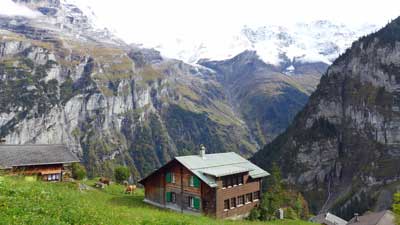
Zurich and Geneva are pleasant but dull. The good news is that Switzerland is packed with amazing sights and none of them are the big cities. If you aren’t 100% locked in yet, please read the article below and I think you’ll enjoy it.
Is the Swiss Travel Pass a good deal? Here's the short version
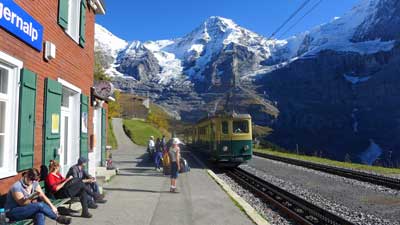
The bottom line is that the scenery, train journeys, and cable car rides in Switzerland are stunning and not found anywhere else in the world. They are also quite expensive if you pay for them one at a time. So no matter how you visit Switzerland, you are going to be paying quite a bit, or skipping the absolute best things that you’ve come there to see.
With good planning it’s quite easy to get great value out of a Swiss Travel Pass, but it might be a poor choice for those who don’t like to plan ahead. You can easily do a scenic train ride and a cable car in the same day, and still have time to do a scenic hike in the process.
First class or second class? Good news for most people
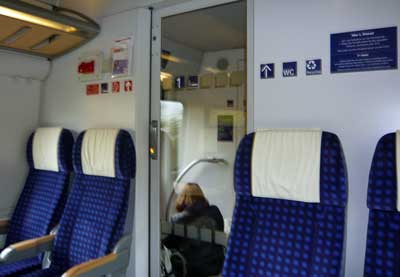
That said, Swiss Trains are literally the nicest in Europe and even the Second Class seats and carriages are nicer and roomier than trains in neighboring countries. The First Class seats are larger and nicer with only 3 across the cabin instead of 4, but honestly Second Class is perfectly comfortable for almost everyone.
Again, First Class on European trains like this is generally popular with business travelers where the company is paying and they need to get work done during the ride, and also senior citizens who don’t want to worry about a carriage full of backpackers. For most of the rest of us, Second Class is more than comfortable enough and the seat width and legroom compare to business-class airline seats. I’m a big and tall guy and I almost always travel in Second because it’s plenty comfortable enough and all the seats arrive at the same time anyway.
The longer you'll be in Switzerland, the better deal a Swiss Travel Pass will be
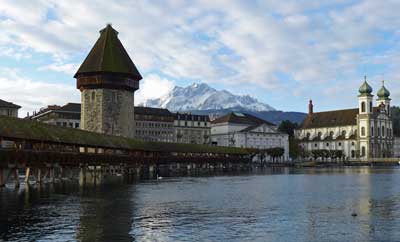
In other words, if you are staying 5 days or fewer, you have to do the math to determine your best option. But if you are spending even 6 or 7 days in Switzerland then the 6-day or 8-day Pass is almost guaranteed to be a great deal and your best choice. Once you have a Swiss Travel Pass you’ll absolutely love the ability to just hop on any train (excellent trains, always on time) and most boats and cable cars without having to worry about the cost. The per-day cost of an 8-day Pass even if you only use 6 of those days is about CHF65, and Switzerland is filled with amazing train rides and boats and cable cars that can get you that much value before noon each day.
Schilthorn (50% discount) and Jungfraujoch (25% discount) are cheaper with a Swiss Travel Pass
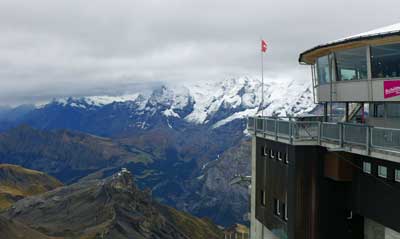
Both of those peak experiences are extraordinary and different from each other. Even so, compared to Jungfraujoch, Schilthorn is also faster and more comfortable on the way up and down. You can enjoy an excellent visit to Schilthorn in 4 hours or so (or a bit longer if you eat at the spinning Piz Gloria restaurant at the top), while a visit to Jungfraujoch requires closer to 6 hours.
NOTE: Schilthorn closes for maintenance for a week or two in late November most years.
Consider the Swiss Half-Fare Card instead
If you AREN’T going to be doing two or more of the long (and expensive) scenic train trips, you will get much better value out of the Swiss Half-Fare Card, which is explained a bit below.
Mt Rigi, near Lucerne, is 100% covered by the Swiss Travel Pass
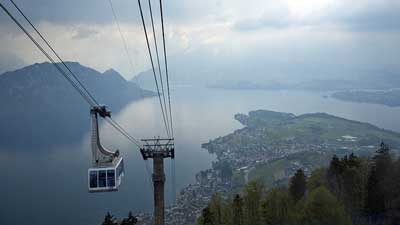
Is a Swiss Travel Pass right for you?
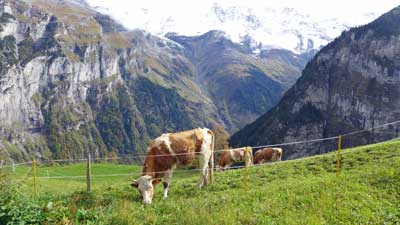
Most people only visit Switzerland for 5 or 6 days at most, so the 3-day and 4-day passes are the ones to focus on. But if you are staying for 8 days or more, those longer passes are almost certainly a great deal for you.
Long story short, if you plan on doing 2 of the more expensive scenic trains and the Jungfraujoch railway or the Schilthorn cable car, then the pass will save you money. Switzerland is expensive, but it’s worth it, and the travel pass can help make it a bit more affordable.
What the Swiss Travel Pass includes
- Free rail travel on normal trains and most scenic trains
- Discounted travel (about 50%) on popular tourist mountain trains
- Discounted travel (about 50%) on popular tourist cable cars
- Free travel on public transport in 75 towns and cities
- Free entry to around 500 museums in Switzerland
The Swiss Travel Pass covers the fare on the most popular scenic and panoramic trains. You can choose a normal seat in a regular carriage for no additional cost, but there is a supplement of CHF8 to CHF49 for a reserved seat in one of the special panorama carriages on these routes.
Prices of the 2024 Swiss Travel Pass
1st Class
- Adult 3-day Pass: CHF389
- Youth (4 to 25) 3-day Pass: 274
- Adult 4-day Pass: 469
- Youth (4 to 25) 4-day Pass: 330
- Adult 6-day Pass: 602
- Youth (4 to 25) 6-day Pass: 424
- Adult 8-day Pass: 655
- Youth (4 to 25) 8-day Pass: 469
- Adult 15-day Pass: 723
- Youth (4 to 25) 15-day Pass: 512
2nd Class
- Adult 3-day Pass: CHF244
- Youth (4 to 25) 3-day Pass: 172
- Adult 4-day Pass: 295
- Youth (16 to 25) 4-day Pass: 209
- Adult 6-day Pass: 379
- Youth (16 to 25) 6-day Pass: 268
- Adult 8-day Pass: 419
- Youth (16 to 25) 8-day Pass: 297
- Adult 15-day Pass: 459
- Youth (16 to 25) 15-day Pass: 328
Swiss Travel Pass Flex
This version costs a bit more, but you don’t have to use the travel days consecutively. It’s a great option for anyone who won’t be taking longer train rides each day.
- Adult 3 Flex days in 1 month (1st Class): CHF445
- Adult 3 Flex days in 1 month (2nd Class): 279
- Adult 4 Flex days in 1 month (1st Class): 539
- Adult 4 Flex days in 1 month (2nd Class): 339
- Adult 6 Flex days in 1 month (1st Class): 644
- Adult 6 Flex days in 1 month (2nd Class): 405
- Adult 8 Flex days in 1 month (1st Class): 697
- Adult 8 Flex days in 1 month (2nd Class): 439
- Adult 15 Flex days in 1 month (1st Class): 755
- Adult 15 Flex days in 1 month (2nd Class): 472
Where to buy the Swiss Travel Pass
The Swiss Half-Fare Card – A better option for many visitors
Far less confusing than the Swiss Travel Pass, you can instead get a Swiss Half-Fare Card, and it will be a better deal for many travelers. The price is lower and it’s much easier to do the math, and the discounts are greater on some things as well.
- Swiss Half-Fare Card for 30 days: Adults – CHF120 or US$129
What you get:
Those who buy the Swiss Half-Fare Card will get 50% discount on all trains, buses, and boats in Switzerland for up to 30 days, as well as 50% off all public transportation in 75 cities and towns.
>>>Buy the Swiss Half-Fare Card
Why the Half-Fare Card is a better deal for many
While the Swiss Travel Pass is a great deal for those doing many of the expensive scenic journeys and mountain sights within a few days, it’s not good value for those who are doing fewer of the expensive trips and/or those who are staying longer. Also, the Swiss Travel Pass only provides a 25% discount on the amazing Jungfraujoch Railway, which costs between CHF120 and CHF224 return depending on your starting point, while the Half-Fare Card provides a 50% discount.
The math is simple as well. You can just add up the cost of the trains, boats, and buses you’ll be taking while in Switzerland, and if the total is more than CHF240 or so, the Half-Fare Card will save you money.
Example itinerary:
- Zurich to Interlaken train (2nd Class): CHF50
- Schilthorn Cable Car: CHF112
- Jungfraujoch railway from Interlaken: CHF205
- Interlaken to Lucerne train (2nd Class): CHF33
- Mt Rigi roundtrip from Lucerne: CHF84
- Engelberg (near Lucerne) to Mt. Titlis Cable Car: CHF92
- Lucerne to Zurich train (2nd Class): CHF25
Total per person: CHF601
Total with Half-Fare Card (including price of card): CHF420.50
It would be tough to do all of those things in 4 days, although it is possible. If you bought a 4-day Swiss Travel Pass here is how it adds up:
4-Day Swiss Travel Pass: CHF259
Supplements for Schilthorn, Jungfraujoch, and Mt. Titlis: CHF203.25
Total cost: CHF462.25
Bottom line on the Swiss Half-Fare Card
Since the Half-Fare Card lasts 30 days and provides a larger discount on Jungfraujoch, it is better value for visitors who want to include that scenic top-of-Europe rail journey on their trip. The discounts also add up more quickly on Schilthorn and Mt. Titlis trips, just to name two examples, and you don’t have to take many longer rail journeys to get value out of the Half-Fare Card.
Swiss Saver Day Pass (A one-day unlimited travel pass)
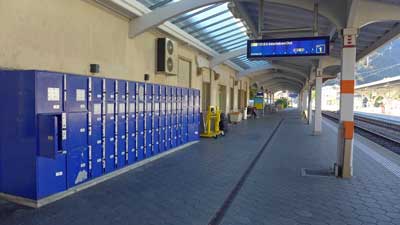
If you buy the Saver Day Pass at least 21 days in advance (and up to 60 days in advance) the 2023 cost is:
- 2nd Class (with Half Fare Card): CHF29
- 1st Class (with Half Fare Card): CHF82
- 2nd Class (with no Half Fare Card): CHF52
- 1st Class (with no Half Fare Card): CHF97
Once you research the normal cost of Swiss train fares you’ll see that the above prices are a very good deal for anyone riding more than 150 kilometers or so in a day. If you are just going, for example, from Zurich to Lucerne or Interlaken on a day, it’ll be cheaper to just buy that ticket individually. But if you are going from Geneva or Montreux to Interlaken or Lucerne then the Saver Day Pass will be much cheaper. Better still, you can use a Saver Day Pass to go from Interlaken to Geneva and back on the same day on the Goldenpass line and returning on the faster train through Bern, and it will still all be included for free.
If you don’t buy a Saver Day Pass at least 14 days in advance it’s more expensive, and if you only buy 1 to 3 days in advance it’s VERY expensive, so the key is to buy early. This is all confusing, but the Saver Day Pass should be a great option for many people only in Switzerland for one to three days.
Popular Swiss panorama scenic trains
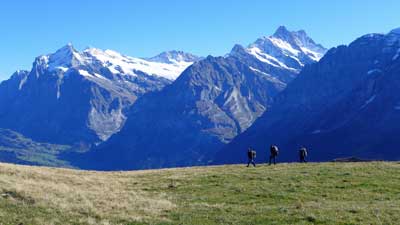
- Glacier Express
- Route: Zermatt to St. Moritz
- Train type: Panorama
- Journey time: 8 hours 3 minutes
- Distance: 291km
- 1st Class fare: CHF272
- 2nd Class fare: CHF159
- Compulsory seat reservation fee: CHF44 or 49
- Supplement for Swiss Pass holders: 13 to 33 for panorama carriage
- Bernina Express
- Route: Chur to Tirano and Lugano
- Train type: Panorama and bus
- Journey time: 4 hours 13 minutes and 3 hours 10 minutes
- Distance: 148km and 90km
- 1st Class fare: CHF113
- 2nd Class fare: CHF66
- Compulsory seat reservation fee: CHF32
- Supplement for Swiss Pass holders: 10 to 14 for panorama carriage
- GoldenPass Line
- Route: Lucerne to Montreaux
- Train type: Panorama
- Journey time: 5 hours 8 minutes
- Distance: 191 km
- Prestige Class fare: CHF131
- 1st Class fare: CHF96
- 2nd Class fare: CHF56
- Supplement for Swiss Pass holders: 8 to 15 for panorama carriage
- Gotthard Panorama Express (formerly Wilhelm Tell Express)
- Route: Lugano or Locarno to Lucerne
- Train type: Panorama and boat
- Journey time: 5 hours 21 minutes
- Distance: 182 km
- 1st Class fare: CHF164
- 2nd Class fare: CHF135
- Supplement for Swiss Pass holders: 39 to 49 for panorama carriage
- Swiss Chocolate Train
- Route: Montreux to Broc round trip
- Train type: Panorama or First Class
- Journey time: X hours X minutes
- Distance: 82 km
- 1st Class fare: CHF99
- 2nd Class fare: 89
- Supplement for Swiss Pass holders: 39
Popular Swiss scenic and theme trains
The scenic trains below are also extremely popular as sightseeing journeys rather than just as transportation, but can be used as both.
- Jungfraujoch round trip
- Route: Interlaken to Jungfraujoch
- Train type: special mountain train
- Journey time: 4 hours 41 minutes, round trip, plus time on top
- Distance: 73 km
- 1st Class fare: N/A
- 2nd Class fare: CHF224
- Supplement for Swiss Pass holders: 147 (so, a saving of CHF77)
- Gornergrat Railway
- Route: Gornergrat Railway
- Train type: Cog railway
- Journey time: 44 minutes return
- Distance: 10 km
- 1st Class fare: N/A
- 2nd Class fare: CHF90
- Supplement for Swiss Pass holders: 45
- Rigi round trip
- Route: Lucerne to Rigi
- Train type: Cog railway
- Journey time: 3 hours 25 minutes, plus time at the top
- Distance: 58 km
- 2nd Class fare: CHF78
- Supplement for Swiss Pass holders: None (this one is free with the pass)
- Mt Rigi Excursion (one-way and walk down)
- Route: Lucerne to Mt Rigi
- Train type: cogwheel train and/or cable car
- Journey time: 45 minutes up
- 1st Class fare: N/A
- 2nd Class fare: 49
- Supplement for Swiss Pass holders: 0
- Lotschberg Mountain Route and Centrovalli
- Route: Bern to Locarno
- Train type: Narrow gauge
- Journey time: 4 hours 40 minutes
- Distance: 212 km
- 1st Class fare: CHF158
- 2nd Class fare: CHF90
- Supplement for Swiss Pass holders: 5
- Jura round trip (Watchmaking Tour)
- Route: Neuchatel through Jura
- Train type: Regular
- Journey time: 3 hours 0 minutes
- Distance: 143 km
- 1st Class fare: CHF168
- 2nd Class fare: CHF108
- Supplement for Swiss Pass holders: 0
- Pre-Alpine Express
- Route: St. Gallen to Lucerne
- Train type: Regular
- Journey time: 2 hours 15 minutes
- Distance: 146 km
- 1st Class fare: CHF83
- 2nd Class fare: CHF47
- Supplement for Swiss Pass holders: 0
- Jura Foot Line
- Route: Basel to Geneva
- Train type: Regular
- Journey time: 2 hours 40 minutes
- Distance: 248 km
- 1st Class fare: CHF132
- 2nd Class fare: CHF75
- Supplement for Swiss Pass holders: 0
Popular Switzerland cable car rides
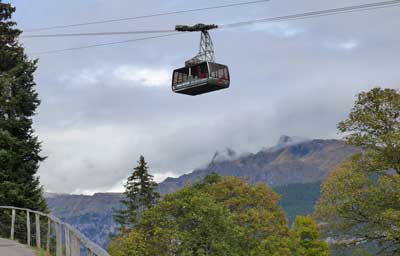
- Schilthorn
- Route: Stechelberg (Lauterbrunnen) to Schilthorn
- Train type: cable car
- Journey time: 1 hour
- 2nd Class fare: CHF108
- Supplement for Swiss Pass holders: 54
- Engelberg to Mt. Titlis cable car
- Route: Engelberg to Mt. Titlis
- Train type: cable car
- 2nd Class fare: CHF96
- Supplement for Swiss Pass holders: 46
The Swiss Travel Pass also includes free museum admission, but…
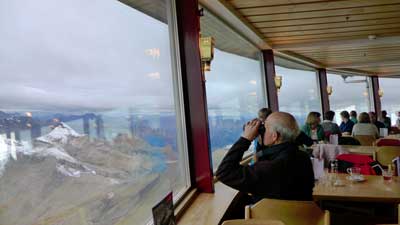
The problem is that the museums are only free on valid travel days, and almost no one would visit more than one or two museums with a Swiss Travel Pass. The trains and cable cars are so expensive that the pass gives very good value to cover those, so you don’t want to waste precious sightseeing time walking through a museum that only costs CHF10 anyway.
In other words, calculate the value of a Swiss Travel Pass on the travel savings only, and if you visit a museum here or there, then great. Most people are better off trying to squeeze in an additional train ride each day, and ignoring the museums. Switzerland is all about the outdoor scenery. As nice as the museums may be, they are not why you are there.
The pass includes free public transport in most Swiss cities
Similar to the free museum part of the offer, it’s best to ignore or minimize the value of free public transportation. It could be helpful in Zurich, but in most other Swiss tourist towns you won’t need much public transport. In fact, in Interlaken, each hotel or hostel guest automatically gets a card for free public transportation within the town (including between the two train stations).
So you might use a ride or two each day on public transport, but that won’t add up to much in terms of value of your Swiss Travel Pass.

Hi Roger, I found your article above very helpful in planning our visit to Switzerland. I read somewhere that the half fare card are only for the citizens of Switzerland, is that true?
Also, with your example of one of the scenic train:
Glacier Express
Route: Zermatt to St. Moritz
Train type: Panorama
Journey time: 8 hours 3 minutes
Distance: 291km
1st Class fare: CHF298
2nd Class fare: CHF170
Supplement for Swiss Pass holders: 13 to 33 for panorama carriage
Is the supplement above, the only extra we will pay on top of our Swiss Travel Pass?
Thank you so much for your time.
Jo,
Most Swiss citizens have an annual version of a Half Fare Card that is only a bit more expensive than the 30-day one they sell for visitors. So you can definitely buy the 30-day one for CHF134, I think, and it’ll save you 50% on almost all transport.
But if you get the Swiss Travel Pass, you would indeed only have to pay the supplement for the panorama carriage. It’s worth checking on current fares since I think I got those a couple years ago and they might be a bit higher now. So if you have a Swiss Travel Pass you can make a reservation on the Glacier Express and only pay that supplement. Let me know if you have any other questions. -Roger
Hi Roger,
Thank you for your article. We are a family of 4 and my 2 children are age 14 & 15yr 9 months. I understand that both my children will be under swiss family card (travel for free). We will travel by train mainly. Appreciate if you can advice whether to select swiss travel pass or Swiss half fare based in our itinerary, thank you!
Day 1-3: Lucerne (Mt Rigi or Mt Titlis) (Ride the Luzern-Interlaken Express)
Day3-5: Interlaken (Lauterbrunnen/ Grindelwald/ Paragliding/ Lake Thun cruise) -Ride the Golden Pass Line
Day5-6: Montreux
Day6-9: Zermatt (Matterhorn/ Gonergrat/ Skiing)
Day9-10: Basel
Joyce,
Without adding it all up myself, it’s tough for me to know which would be cheaper, but my strong hunch is that getting the Swiss Travel Pass would be the best option. You might be able to get away with just an 8-day version since you won’t need it much while in Basel, but the good news is that 15-day Pass is only a bit more expensive than the 8-day Pass, so I think it’s worth it to get that one. You are definitely planning quite a few of the more expensive things that are included with the Pass, such as Mt Rigi, Lake Thun cruise, Golden Pass etc, plus all of your other train travel.
And especially since your kids will be doing all of this for free with you, I think it’s worth it to just splurge a bit even if it were possible to save a bit of money with the Half Fare Card. As I’ve mentioned before, the peace of mind of having prepaid (almost) unlimited travel is worth a lot. You’ll be walking through a village and discover there is a mountain train or cable car there, and if you have the pass you can just climb aboard. With the Half Fare Card it might be CHF40 per person, so CHF20 with the card, and those things do add up. It’s just really nice to be able to treat the country as an all-inclusive travel experience (except for Schilthorn and Jungfraujoch, and even then you get half fare with the Swiss Travel Pass).
I hope this helps and let me know if you have any other questions. -Roger
Hi, I came across your blog and I must say very useful info indeed! Can I get your views on whether I should get the swiss travel pass? This is my itinerary:
Leuk- 2 days
Zermatt- 2 days
Lauterbrannen- 4 days (2-3 days spent skiing)
Lucern area- 3 days
I’m really confused as to which pass to get, especially since I’m skiing in the middle. Should I just get the half fare card or the saver day passes?
Flo,
This sounds like a great trip, although I must admit that I hadn’t heard of Leuk and don’t know what you’d be doing here. That said, I agree with you that the Half Fare Card is a must and that getting Saver Day Passes for the days when you’ll be doing the pricey things sounds best. The Half Fare Card will save you a fortune, possibly even on skiing days, but a Swiss Travel Pass wouldn’t be useful on those days. Have a great trip! -Roger
Hi Roger
Thank you so much for the detailed explanation on the complicated Swiss passes. I’ve visited numerous websites on these passes to help me decide but I end up being more confused. I have to say your explanation is very clear and detailed, so thank you for that. I’m travelling with my family (with husband, kids aged 5 and 13) to Geneva early December. We will be there for 5 nights as my husband is working. We won’t do any travel out of Geneva during this 5 days. On day 6, we plan to take the train to Interlaken and stay there for 3 nights before returning to Geneva. During these 3 days, we will visit top of Europe, Lauterbrunnen and Grindelwald. I am contemplating if I should even get any travel pass or just pay per ride. Appreciate any suggestion you have. Many thanks.
Ruth,
I’m glad I have helped and it’s crazy how confusing the Swiss system is, especially when I’m sure their intention is to allow visitors to customize their experience as much as possible.
My guess is that you’ll be best off starting with a Half Fare Card for each adult and the complimentary Swiss Family Card, which provides free accompanying travel for kids from 6 to 15. The Half Fare Card will start saving you money on your way from the airport to Geneva and then almost anything you do until you depart for Interlaken as well.
With just the Half Fare Card and the free travel for the kids, everything is pretty reasonably priced already. However, if you will be doing some of the more expensive train rides on one day, you also have the option of buying a Saver Day Pass for that day. Those are very cheap if you buy them at least a few weeks in advance, so planning ahead is key. In fact, since they are so affordable when bought with a Half Fare Card, you might think about planning to load up on the expensive things on that day or those days. You get free rides on the train from Interlaken to Lauterbrunnen as well as free cable car rides (except for the last two legs of Schilthorn) and even some mountain railways included.
So again, the Half Fare Card should pay for itself a few times over and partly before you even leave Geneva, and then maybe a Saver Day Pass for a day or two while in Interlaken. Let me know if you have any other questions. -Roger
Hey Roger,
I found your article very interesting. It has me rethinking buying the swiss travel pass. My wife and I are visiting Switzerland this month with the following itinerary.
Day 1: Arrive/Zurich
Day 2: Lucerne/ Mount Pilatus
Day 3, 4, 5, 6: Bernese Oberland (plan to visit Schilthorn, Jungfraujoch, First, and all the towns in the valley)
Day 7,8: Zermatt
Day 9: Montreux/Lausanne
Day 10: Bern
Day 11: Depart
I’ve been going back and forth between the Swiss travel pass, half-fare card, or possibly getting the half-fare card w/ the top of Europe pass. It is a little overwhelming. What would you recommend for the duration and extent of our itinerary off the top of your head? We don’t plan on taking any of the long panoramic train rides. Any help would be appreciated.
Albert,
First off, I think your itinerary looks pretty much perfect as it is, so well done on that. I think visiting those cities will be worthwhile since you’ve got plenty of time in the Alps and other natural spots.
As for the best option, it’s tough to say without knowing the specific things you’ll do on the different days, and then adding all of those up. Since you are staying at least 8 days, the full Swiss Travel Pass becomes very cheap on a per-day basis, so I’d probably go with one of those. Then it’s really between the 8-day pass or the 8-day Flex Pass, which would allow you to skip a day or two. The only efficient days to skip would likely be Day 9, 10, or 11, and of course you’d skip Day 1 because the train from Zurich Airport into Zurich is like CHF10 or so. If you bought an 8-day pass and used it on Days 2 through 9 then you’d have to check the fare from Lausanne to Bern and to the airport. If you buy those in advance you might even find a “supersaver” fare, which can be cheap.
If it’s a close call, price-wise, I always recommend getting the full pass. The thing is, while on your trip you’ll come across boat rides and cable car rides and short train rides that will be tempting to do spontaneously, and all of them are fairly expensive by themselves. And with the full pass you can literally just hop on almost any train or boat or cable car without worrying about the price, and that is a great feeling. That’s true for museums as well.
On the other hand, if you don’t think you’ll want to pack your days with big attractions and such you might consider getting the Half Fare Card and then buying the Saver Pass for the days you’ll do the big attractions. In that case you might be able to have the pass for only 4 or 5 days, and you’ll have the Half Fare Card for your whole trip, which will help on Day 1, 9,, 10, and 11 as well. It just depends on how busy you’ll want to keep yourselves.
One sort of frustrating thing about Switzerland is that literally everything seems overpriced because almost everyone (locals and most visitors) buys a Half Fare Card. If you are a Swiss resident you can get an annual card for not much more than the 30-day visitor one, so ALL locals have them if they are riding the trains.
Hopefully this helps a bit, although I’m sure it’s still fairly confusing. But again, I’d probably lean toward a full pass because it even acts as a Half Fare Card for things like Schilthorn that are not currently fully covered. Let me know if you have any other questions. -Roger
Hi Roger, thanks for this article, really made me think about our itinerary more and if Swiss family travel pass would be a good option. We’re traveling by train from Munich dec 19 to Interlaken, stay there 2 nights, with plans to go top of Europe. Then Lucerne as our base for 3 nights, with plans for day trips to Zurich and Basel, maybe Colmar if not too much for 2 kids traveling with us. We’re flying out from Zurich on dec 24th. Thank you in advance and let me know your thoughts on the itinerary too .
Michelle,
I think your itinerary sounds fantastic. The one thing I’d mention is that Zurich and Basel are both fairly dull as European cities and you might have a better time if you did more mountain sightseeing and such. Bern is actually the most interesting of the cities, so that’s one to consider. Normally I focus on the bigger cities on my European adventures, but Switzerland is a bit different for some reason. It’s a bit like visiting Hawaii and spending a lot of time in central Honolulu. While Honolulu is somewhat interesting, it’s a shame to miss so many natural highlights in Hawaii. I hope this helps. -Roger
Dear Roger, how I better cross Switzerland from Zurich to Geneva with a third place in between like Jungfrau by rail in Winter 2023 ? I plan a trip for my seniors and would highly appreciate your advice.
Vitaliy,
I think if you are going between Zurich and Geneva I think the best stop is the Interlaken area. I discuss that in detail on my article about where to go in Switzerland. The short version is that the Interlaken area, and specifically the Lauterbrunnen Valley where Jungfrau is located, is the best and most scenic place to visit in Switzerland if you have to pick just one. Let me know if you have any other questions. -Roger
Amazing Article!
We’re a couple flying in to Zurich, staying in Brienz(close to train station).
My itinerary is as follow :
Day 1 – Zurich Airport to Brienz
Day 2 – Interlaken, Wengen, Lauternbrunnen or Grindalwald. Any suggestions?
Day 3 – Brienz to Engelberg – Mount Titlis
Day 4 – Brienz to Zurich Airport
I can book the Savers Day passes for each of the 4 days in advance, which comes to 52CHF*4 days + Elgelberg to Mount Titlis cable 92CHF. Total 300CHF per person.
Alternatively, I could buy the Swiss pass for 4 days with 50% discount on Elgelberg/Mount Titlis cable – 28CHF swiss pass +48CHF cableride.
Total 327.
Based on my above calculation, buying 4 day each Savers Day passes is beneficial. Any there anything I am missing.
What travel card/pass/tickets do you recommend? any explanation will help.
Thanks a ton,
Tan
Tan,
I’m glad you found this helpful. Your trip looks great, but I’m not sure about your calculations. First off, if you are only going from Zurich Airport to Brienz on Days 1 and 4, those tickets should only cost around CHF20 each way per person, so a Saver Day Pass may not be helpful or necessary for those days. If you arrive early enough then it might work well for your arrival date, as you’ll be able to take the train into Interlaken and a cable car or two on that day, and I suppose the same is true if you depart late enough on Day 4.
The other option is to buy a Half Fare Card, which will save you just a bit on the Saver Day Passes and also for the airport to Brienz trains if you can’t find Supersaver fares for those. It would also give you half price for anything you do on Day 1 and Day 4, without having to pay for the Saver Day Pass. So in other words, you might be able to do it even cheaper, but you have to check the prices of the specific days you’ll be there. As you can see with the Saver Day Pass, the earlier you buy it, the cheaper it is.
Overall it’s clear that you’ve done your homework and it looks like a really affordable way to see a lot in a few days.
As for Day 2, I’d recommend going up the Schilthorn cable car if you can and if the weather is clear. Once you arrive in Lauterbrunnen you’ll see what an amazing place that valley is. If you don’t want to do Schilthorn, or if it’s cloudy or foggy up there, I’d still recommend taking the cable car from Lauterbrunnen up two stops to Wengen and strolling around town. Then you can walk down the trail to Gimmelwald for an even more special experience in that tiny village. You can take the cable car down from Gimmelwald to Stechelberg and take the connecting bus back to the Lauterbrunnen train station for a walk around that village. All of the transit options are connected and they will be free with the Saver Day Pass, although you’ll have to pay half fare for the part up to Schilthorn. It’s worth it if it’s clear up there and there is a nice rotating restaurant on top (Piz Gloria) with normal Swiss prices (more or less).
I hope this helps and let me know if you have any other questions. -Roger
Comment*
We’re a couple flying in to Geneva Aug 15. We plan to cycle around Lake Geneva, but also take advantage of the rail and boat system to hop back and forth around the lake as well as take some mountain trips by rail on the non cycling days. I’m guessing 7-10 days in Switzerland. Pass vs Flex pass vs half off? We’re looking for maximum convenience and flexibility, but do understand well have to get daily bike passes. Thanks for your imput!
Bill,
This sounds super fun but I must admit that I have no experience with a bike vacation using public transport like this. That said, it almost always comes down to how many of the big-ticket train rides you’ll be taking and in how many days. If you’ll be having several mainly biking days in there then I think a Flex Pass might be the maximum you’d need. Or perhaps even a Half Fare Card with a Saver Day Pass for a couple days when you want to do the long train rides? That might be best of all. Those Saver Day Passes do go up in price as the date draws near, so unfortunately you’d have to figure out your non-train days pretty soon.
Sorry I couldn’t have been more help. -Roger
Hello Roger,
Thank you so much for this detailed explanation of Swiss Travel Pass. However, I am still little confused if I should get 6 days travel Pass or Half fare. I’m counting my starting Pass day from Aug 26th when I leave for Wengen since I don’t know if I will need the travel pass when I am in Zurich for those 2 days
Our itinerary is as follows.
We arrive Zurich on Aug 24th and stay 2 nights in Zurich.
Aug 26th Zurich to Wegen. 4 nights in Wengen. During our stay in Wengen we plan to do Mount rigi, schilthorn. Day trip to Grindelwald, do short hikes in Jungfrau regoin. We most likely won’t do Jungfraujoch or any of the scenic trains.
Aug 30th Wengen to Bern. 1 day in Bern
Aug 31th Bern to Basel to catch a train to Paris
Please advice If I should get Swiss travel pass or half fare ?
Thank you so much
Saney,
That all sounds good. And there isn’t much you can do with a Swiss Travel Pass while just sightseeing in Zurich, so that is a good idea. Without adding it all up, I think the Half Fare Card is probably the best option, and of course it’ll be valid for 30 days so you can activate it even for your ride from Zurich Airport into the city.
As mentioned before, the STP can be great value if you are doing multiple longer train rides, but it’s harder to get enough use out of it when just taking short train rides and boat rides and cable cars. The Half Fare Card is almost as valuable on Schilthorn, so it just won’t be worth the extra cost. There were a few years when the Pass fully covered Schilthorn, but now it basically just gets you half price on the segment that goes to the top.
I’m sure it’ll be a great trip and the Half Fare Card will save you a lot of money for a much lower cost. Enjoy! -Roger